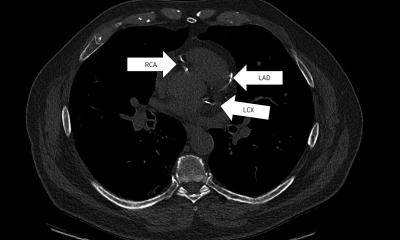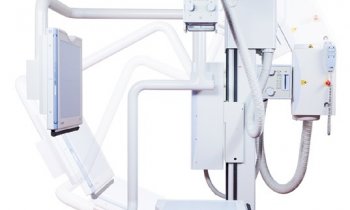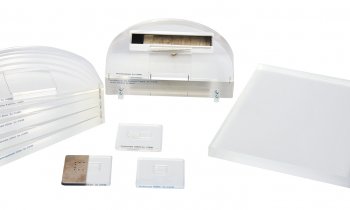Predicting the odds of heart attacks via ultrasound?
According to Prof Clemens von Birgelen, cardiologist on staff at the Thorax Centre of the Medisch Spectrum Twente in Enschede, who quoted from recent studies in his inaugural as a professor at the University of Twente at the beginning of June, this might be the case.
Because compared to other techniques, Intravascular Ultrasound (IVUS) is much better at monitoring the increase or decrease of atherosclerosis in the coronary arteries – and therefore offers new perspectives in diagnosing coronary diseases.
Results of IVUS measurements also raise the question of whether patients with demonstrated coronary disease should be treated with more powerful cholesterol-lowering statins to reverse atherosclerosis.
Narrowed coronary arteries due to atherosclerosis can be visualised using 'classic' cardiac catheterisation, but the technique only shows the space the blood flows through, the 'lumen', and not the diseased vascular wall surrounding it. By using a specialised catheter with an ultrasound 'sensor', IVUS also creates images of the calcifications, the 'plaque', and allows various components of the plaque to be identified not only calcium, but also fat and connective tissue. Von Birgelen states that this additional information is important for assessing disease progression - plaque progression. Plaque initially leaves the lumen unaffected and grows outward. The blood vessel as a whole becomes wider, leading to a significantly increased risk of heart attack. However, plaques may also decrease in volume while the lumen diameter remains the same, something that can only be determined using IVUS.
Statins
Various studies have shown a relationship between plaque growth and cardiovascular events, such as heart attacks. "Plaque progression measured using IVUS could become a valuable 'surrogate marker' for cardiovascular events", states Von Birgelen. In his address, he also highlights the relationship between plaque progression and cholesterol. Decreasing cholesterol through intensive statin therapy not only slows plaque formation, but actually reverses it. This is reason enough for the professor to question the current target value for LDL cholesterol of 2.5 for patients with coronary disease; at that value, over half of patients still have plaque growth. Von Birgelen wants to determine whether or not a large group of patients is receiving sub-optimal treatment for reducing plaque.
Drug eluting stents
IVUS also plays an important role in the treatment of narrow coronary arteries, for example during balloon dilation and the placement of a so-called 'stent'. New types of stents are being made with integrated regulated drug release to prevent the formation of scar tissue in the stent thereby decreasing the odds of recurrence. Von Birgelen is currently performing research on these new stents at the University of Twente, and will soon be launching the so-called 'TWENTE study' at the Medisch Spectrum Twente hospital, in which about 1400 patients will be treated with one of two promising drug eluting stents in order to compare the clinical results. "During some PCI procedures, IVUS is essential for properly guiding the implantation", according to Von Birgelen. He believes that good invasive imaging of the coronary arteries will remain important in future in order to safeguard the quality of care for heart patients.
Professor Clemens von Birgelen is a cardiologist on staff at the Thorax Centre of the Medisch Spectrum Twente in Enschede. His Chair at the University of Twente, made possible in part by the Heart Centre Twente Foundation and entrepreneur Ferdinand Fransen, shares the university's ambition to play a leading role in the development and application of technology in healthcare.
17.06.2008










